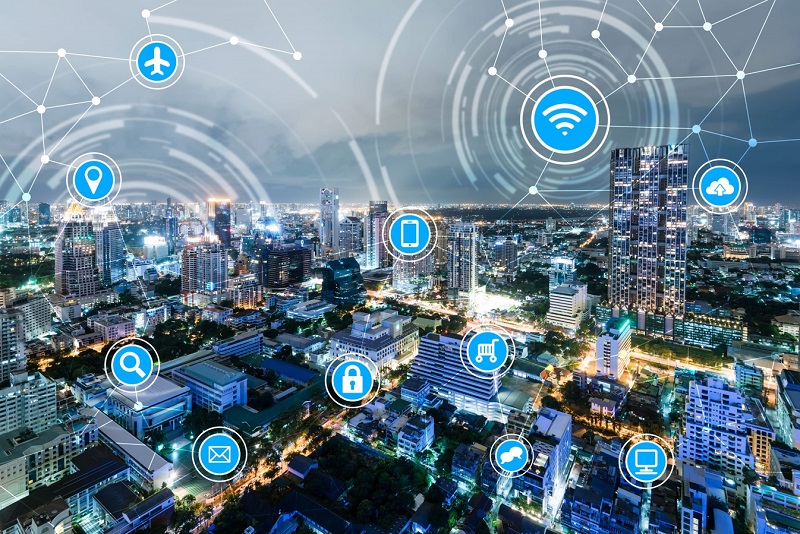Bayer Crop Science’s Next Wave of Logistics and Distribution Transformation
During Blue Yonder ICON 2021, I had the pleasure to speak with Johnny Ivanyi, the Global Head of Distribution Excellence of Bayer Crop Science, and Kishore Yarlagadda, Global Distribution Deployment Lead of Bayer Crop Science, for the session “Next Wave of Logistics and Distribution Transformation.” Here are a few topics they covered that I would like to share with you.
Global Scale Digital Journey
Please describe your digital journey. Bayer Crop Science is very large, with over Euro 45 billion in revenue. For a company of this size and magnitude, you have greatly advanced supply chain and logistics technologies and capabilities. What’s next in this journey?
Johnny: Our digital transformation is across the globe in Bayer Crop Science. We have four main regions in the organization: North America, Latin America, Europe, and APAC. The transformation is happening across the globe.
We have a few key elements on this transformation:
- The first one is Personalized Service: Service differentiation through customer-driven and personalized distribution solutions improving customer satisfaction while enabling new go-to-market-approaches.
- The second element is how we are going to work with partners like Blue Yonder to increase visibility, enhance communication and supply reliability.
- Third is the visibility and annalistic: Full real-time inventory visibilityfor warehousing and shipment tracking including 3PLs and usage of advanced analytics to enhance distribution orchestration.
- The fourth element is Efficient Operations: Focus on high efficiency in distribution processes, automation, legacy system integration and operational excellence to enhance reliability, customer experience, sustainability.
These are the four capabilities for Bayer to achieved globally by 2025. We’ve also defined three stages and set up projects to attain these new capabilities:
- Starting five years ago, we implemented Blue Yonder’s transportation management solution (TMS). We are continuing to integrate this global TMS with more systems such as our digital ERP.
- We are also working on attaining last-mile visibility and connecting real-time track and trace of trucks for deliveries.
- We are in parallel working on B2B connectivity.
These are the three major projects across the globe in the four regions with different maturity stages. The plan is to get these journeys completed by 2025.
Past and Future Results
What are some of the results that have been achieved in the past and what is expected in the future?
Kishore: The company is looking to standardize global processes across every region. Transportation will have a single process and platform; however, it will also have the ability to add in regional variability because of local regulations or legal requirements.
In Transportation, every region currently has their own job segments, so we are looking to create a set of standardized job roles. We implemented a similar job standardization project in 70-plus countries for our Seed business, as well as crop production and crop science in North America.
With Blue Yonder’s TMS, we now have a 3% to 5% of transportation savings in spend, which varies due to regional maturity. And we have on-time delivery metrics because we have data visibility across the platform. This then allows us to see carrier performance so we can identify and assign the right carrier for a pick-up based on performance.
A future goal is to bring all the crop science businesses into one single platform for transportation. We will bring the Robotic Process Automation (RPA) in TMS. From the organization perspective, we would move from decentralized planning to centralized. We will be using the RPA to redefine non-touch planning and improve our job roles as well.
Advice to Ensure Success
What advice can be given to the audience on how to leverage the solution at a global scale to attain success in such a digital journey?
Kishore: It is very important to get cross-functional alignment, as transportation touches customer service, manufacturing, and procurement. Make sure that you go to the team within all the cross-functional organizations and get their buy-in to start implementing.
Johnny: Think about value creation and your stakeholder: what is the real value proposition of the project, so that you can share the understanding of this digital transformation. We are coaching different people in the organization with different knowledge!
The second point is about the importance of training. Sometimes we underestimate training in our organizations. If the colleagues were working with Excel spreadsheets and you are getting a sophisticated tool like the Blue Yonder TMS today, you need to train them to exploit the new functionalities.
The third point is around change management, which is very important alongside the implementation. If we have three phases and we tie them to a value proposition, then the implementation, hyper-care and change management are important to ensure the value for the transformation. We need to work closely with the regions and understand their cultures. We are talking about across 70-plus countries. The methodology that we are using in APAC is not the same methodology of change management we are going to use in the U.S. We understand that as a company, when it comes to standardization, it is covering 80%. There is 20% of alternative information due to local conditions. We need to take these local factors into consideration to get the right approach and to ensure implementation success and realize the value of these transformations.
Learn more about Blue Yonder’s transportation management and unified logistics. For more insights from ICON 21, please go here.

